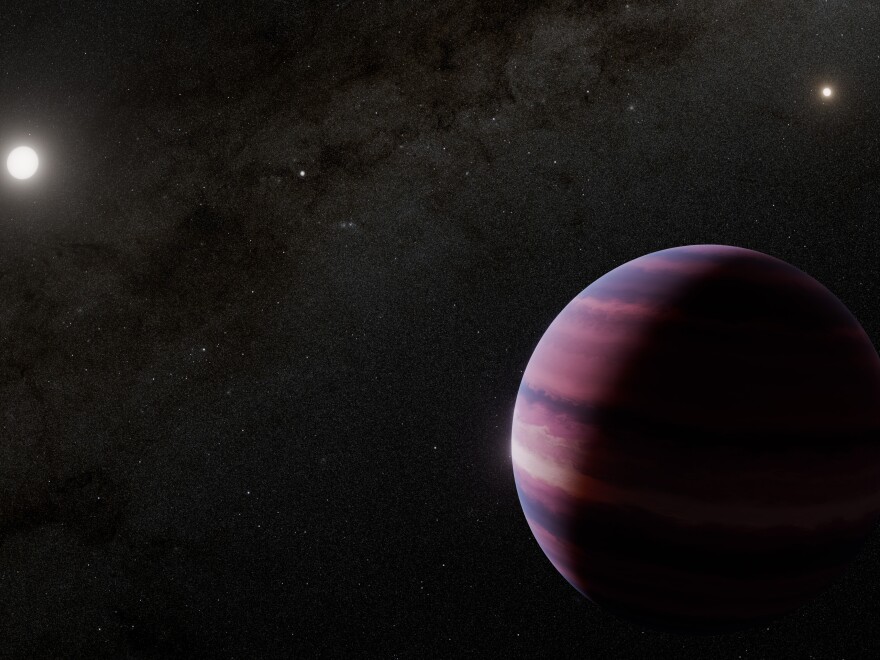Alpha Centauri A is a star that is only 4.3 light years away from Earth and is well-known for being the closest star to our Sun.
The luminous fantasy world of Pandora, the fictitious moon of a Jupiter-like planet, is located in the system of this star in the well-known Avatar films.
Astronomers who used the James Webb Space Telescope to observe Alpha Centauri A have discovered that, in fact, a gas giant planet appears to be around it.
Furthermore, according to two investigations published in The Astrophysical Journal Letters, the planet appears to orbit at a distance from the star where temperatures could be comfortable enough for life.
And like in Avatar, some scientists don’t see why it couldn’t have a moon.
“It probably does have moons,” says Charles Beichman, an astronomer who works at NASA’s Jet Propulsion Laboratory and Caltech.
Alpha Centauri B and Proxima Centauri are near neighbors of Alpha Centauri A, which is a member of a triple-star system. They have long loomed large in the imaginations of astronomers and science fiction writers alike, seeming to be among the brightest objects in the night sky when combined.
“I mean, this goes back to books by Arthur C. Clarke to more recently, you know, the movie Avatar,” he continues. Considering how close Alpha Centauri is in terms of space, “Certainly in your science fiction dream, you say, ‘Well, if we’re going to get anywhere, we’re going to be able to go to Alpha Centauri,'” that is.
However, it has been challenging to go planet-hunting around Alpha Centauri A and B, which orbit each other, despite the fact that scientists have recently found thousands of planets orbiting stars outside of our solar system, including some around Proxima Centauri, which is a fairly dim star.
Beichman notes that one popular way to identify planets is to measure how the planets’ gravity pulls on their host stars, but this method is complicated by the gravitational interactions between these two stars.
Furthermore, telescopes may be overwhelmed by the brightness of their starlight. Beichman compares the situation to trying to aim your phone’s camera at a bright object: “It just, you know, blurs everything out, or blasts everything out.”
However, there were a few benefits to the James Webb Space Telescope. The type of infrared light that would emanate from a temperate planet is precisely what one of its equipment is made to detect. According to Beichman, it also features “specially-designed masks” that “let you see in close, to see if you can see a planet” by blocking off the light of a central star.
About a year ago, he and his colleagues spotted a planet circling Alpha Centauri A for the first time. Since then, they have attempted to observe it, but it might have moved to a location that is out of the telescope’s field of vision due to its orbit. It is currently just regarded as a candidate planet because additional observations are required to confirm its existence.
However, based on their observations, it appears to be of the proper mass and size to be classified as a gas giant.
Beichman says the planet might even have rings. “It’s something like a Saturn mass, a Jupiter radius, and just like the gas giant planets in our own solar system, if you move them in closer,” he says.
According to him, temperatures may be between 40 and 50 degrees below zero Fahrenheit, placing it “in the outer edge of the habitable zone,” but it may also experience warmer spells because it appears to have an erratic orbit that occasionally brings it closer to its star.
Additionally, moons provide the prospect of solid ground or perhaps oceans, whereas gas giant planets appear like an unlikely place for life.
“There are most likely moons there, as I would anticipate. According to Mary Anne Limbach, an astronomer at the University of Michigan who has looked for extraterrestrial moons but was not a member of the team of academics working on this planet discovery, moon formation around big planets should be very common in general.
This planet candidate, she believes, might theoretically potentially have quite massive moons, even as huge as Mars, “in sort of an optimistic case.”
“I think that’s definitely an environment where you could get, potentially, life to evolve,” she adds, adding that many scientists believe that the greatest areas to look for extraterrestrial life are on our own solar system, such as Saturn’s hydrocarbon-rich Titan or Jupiter’s frigid Europa.
Although he was dubious, another seasoned moon-hunter concurred that a sizable lunar satellite was theoretically feasible.
In an email to NPR, Columbia University astronomer David Kipping said that this planet candidate is too small to have a large moon. Something Titan-sized seems more plausible to him.
He says, “But Titan is too small to hold onto its atmosphere if we moved it into the habitable zone” around a star. He states that in order for this planet candidate to possibly have a moon that may support life, “really you need this planet to have an unexpectedly big moon.”
Could this star system, like the one in Avatar, have a Pandora? According to Kipping, “it’s not impossible,” but it seems like a stretch that would need a lot of circumstances to come together perfectly.
However, Limbach notes that the question of whether a moon could have any life at all is very different from the question of whether it could have a sophisticated web of luxuriant life-forms, similar to what sci-fi authors imagined for Avatar’s Pandora.
Similar to how this potential new gas giant planet hasn’t been definitively identified, she claims that although scientists have discovered evidence of moons outside of our solar system, these moon detections haven’t been verified as genuine.
“I think the first thing I want to see before we claim victory and say this is a planet,” states Limbach, “is follow-up observations to confirm it.”
However, she continues, “I think it’s really exciting that our neighbor could have a giant planet, so close by.”
Copyright 2025 NPR






